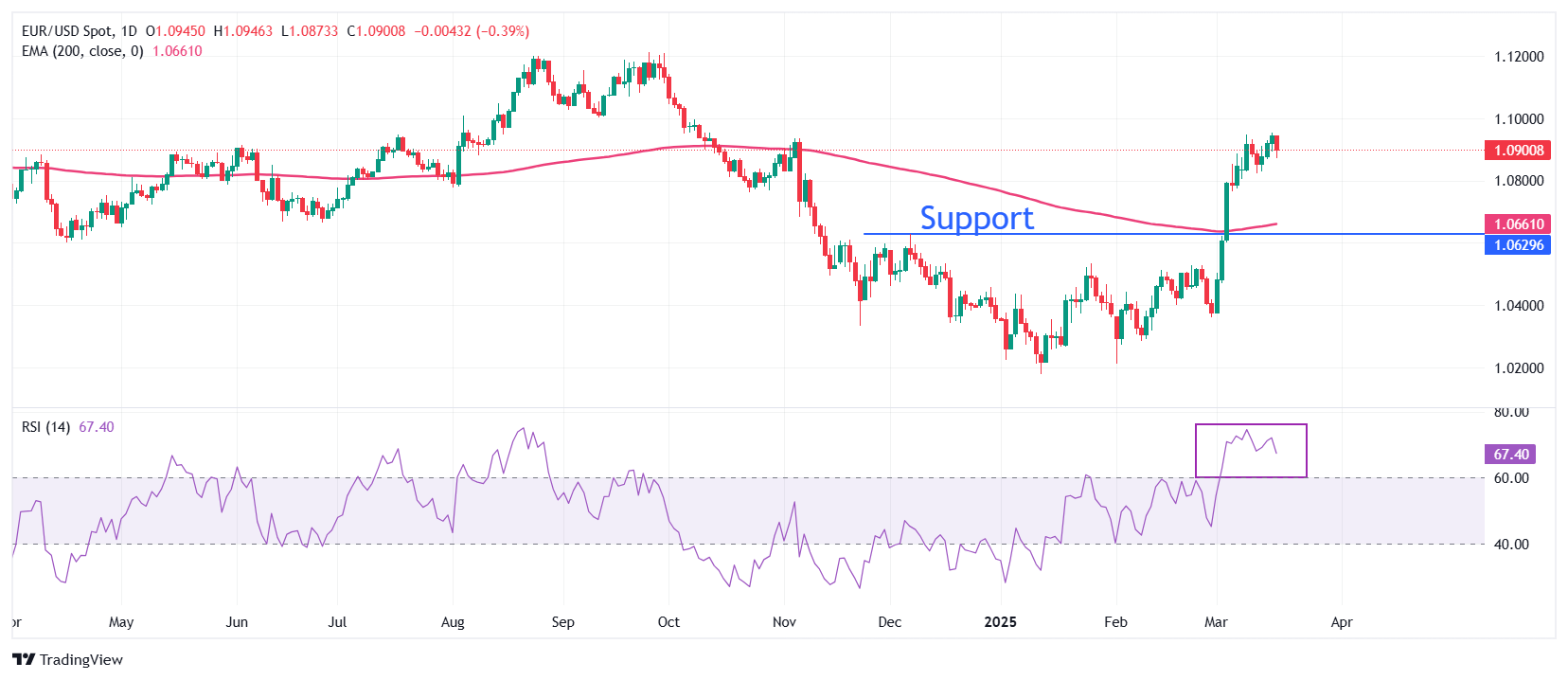- EUR/USD struggles near 1.0950 as the US Dollar gains momentum ahead of the Fed’s policy decision.
- The Federal Reserve is expected to maintain interest rates within the 4.25%-4.50% range.
- The Euro weakens despite German lawmakers approving an increase in the borrowing limit.
EUR/USD slides below 1.0900 in Wednesday’s European session after reaching a five-month high of 1.0955 the previous day. The pair weakens as the US Dollar (USD) strengthens ahead of the Federal Reserve’s (Fed) interest rate decision at 18:00 GMT. The US Dollar Index (DXY) climbs to 103.70 after bouncing from a five-month low of 103.20 on Tuesday.
The Fed is widely expected to keep borrowing rates steady at 4.25%-4.50%, marking the second consecutive meeting without a change, according to the CME FedWatch tool. Market confidence in a hold decision remains firm as Fed officials advocate for a cautious “wait and see” approach to gauge the US economic outlook under President Donald Trump’s leadership.
Traders anticipate that Trump’s tariff policies could fuel inflationary pressures, as higher import duties would be passed on to consumers. Alongside the rate decision, investors will scrutinize the Fed’s dot plot, which outlines policymakers’ expectations for future rate movements. In December, the Fed projected two rate cuts in 2025.
Daily Market Movers: EUR/USD Slumps as Euro Underperforms
- EUR/USD’s sharp drop from recent highs is also attributed to broad-based weakness in the Euro (EUR). Despite German lawmakers approving Chancellor-designate Friedrich Merz’s debt restructuring plan on Tuesday, which aims to boost economic growth and defense spending, the Euro remains under pressure.
- Investors speculate that Germany’s shift away from fiscal conservatism after over a decade could be inflationary, prompting the European Central Bank (ECB) to adopt a more cautious stance on monetary easing. The ECB has already cut interest rates six times since June 2024.
- Meanwhile, concerns are growing that Trump’s tariff agenda could increase price pressures in the Eurozone. US Treasury Secretary Scott Bessent confirmed in a Fox Business interview that countries will receive their new tariff assessments on April 2.
- Geopolitically, President Trump and Russian President Vladimir Putin have agreed to a temporary 30-day ceasefire on attacks targeting energy and infrastructure in Ukraine. Trump stated on Truth Social that both sides will work toward a full ceasefire and a resolution to the war.
Technical Analysis: EUR/USD Faces Resistance Near 1.0950

EUR/USD struggles to maintain upward momentum above 1.0950. However, the long-term outlook remains bullish as the pair holds above the 200-day Exponential Moving Average (EMA) at 1.0660.
A breakout above the December 6 high of 1.0630 on March 5 signaled renewed strength. The 14-day Relative Strength Index (RSI) hovers near 70.00, indicating strong bullish momentum.
On the downside, the December 6 high of 1.0630 serves as key support, while the psychological 1.1000 level remains the primary resistance for Euro bulls.





